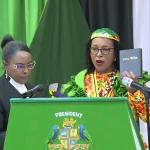Black Carib Revolt

The Black Carib Revolt, also known as the Second Carib War (1795–1797), was a significant conflict between the British colonial forces and the Black Caribs (Garifuna) on the island of Saint Vincent. While this revolt did not occur in Dominica, it is essential to understand its context and connections to the broader resistance movements in the Caribbean, including those in Dominica.
Background of the Black Caribs
The Black Caribs, or Garifuna, are descendants of African slaves who intermarried with the indigenous Carib population on Saint Vincent. Their unique cultural identity emerged from this blend of African and Carib traditions. By the late 18th century, the Black Caribs had established a distinct society on Saint Vincent, resisting European colonization efforts.
The Second Carib War (1795–1797)
The Second Carib War was a pivotal conflict between the British colonial forces and the Black Caribs on Saint Vincent. The British aimed to expand their plantations into lands occupied by the Black Caribs, leading to tensions and eventual warfare. The Black Caribs, familiar with the island’s terrain, employed guerrilla tactics, making it challenging for the British forces. Despite their resilience, the Black Caribs were eventually defeated. In 1797, approximately 5,000 were deported to Roatán, an island off the coast of Honduras, leading to the dispersion of the Garifuna people across Central America.
Connections to Dominica
While the Black Carib Revolt occurred on Saint Vincent, Dominica experienced its own resistance movements during the same period. Notably, the Balla Slave Rebellion in 1784 was led by Maroons who had established communities in the interior of Dominica’s mountainous rainforest. These Maroons engaged in guerrilla warfare against the British for several decades.
Additionally, in 1802, the Mutiny at Dominica involved the 8th West India Regiment, comprising African soldiers protesting poor conditions and lack of pay. This revolt highlighted the broader discontent among African-descended populations in the Caribbean during this era.
While there is no direct evidence linking the Black Carib Revolt in Saint Vincent to these uprisings in Dominica, the simultaneous nature of these rebellions indicates a widespread resistance against colonial oppression among African and indigenous communities in the Caribbean.
Aftermath and Legacy
The Black Carib Revolt on Saint Vincent and the resistance movements in Dominica during the late 18th and early 19th centuries reflect a broader pattern of defiance against colonial rule in the Caribbean. While the Black Carib Revolt did not directly involve Dominica, the shared experiences of resistance highlight the interconnected struggles of African and indigenous peoples in the region during this tumultuous period.




